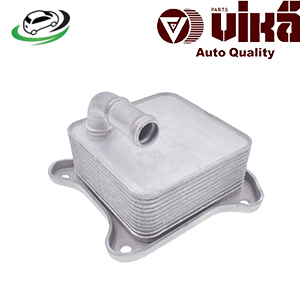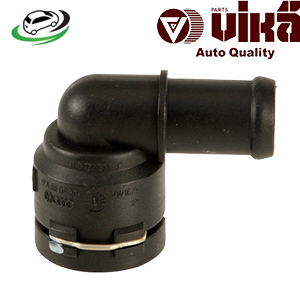-18%
Get VW Jetta 1.4L/1.5L/2.5L TSI/ Passat 2.0L/2.5L TDI/ Taos 1.5L TSI/ Beetle 2.5L Heater Hose Connector 1K0122291J
The heater hose connector is a vital component in your vehicle’s cooling and heating system, ensuring the proper flow of engine coolant between the engine, heater core, and radiator. It plays a crucial role in regulating the temperature within the vehicle, allowing the cabin heater to function effectively, especially in cold weather. In this article, we will explore the functions, benefits, common issues, and maintenance tips associated with heater hose connectors, highlighting their importance in both the cooling and heating system of an internal combustion engine.
1. Introduction to Heater Hose Connectors
The heater hose connector is a simple yet critical part of the vehicle’s HVAC (Heating, Ventilation, and Air Conditioning) system. It serves as a connection point between the engine’s cooling system and the heater core. The heater core, which resembles a small radiator, uses the hot coolant from the engine to warm the cabin air, ensuring comfort during cold weather. The coolant circulates from the engine to the heater core through hoses, and the heater hose connector facilitates this flow by linking the hoses securely and ensuring a tight seal.
Heater hose connectors come in various materials, such as plastic, aluminum, or brass, depending on the vehicle make and model. Despite its simplicity, the heater hose connector is subject to wear and tear over time, especially when exposed to extreme heat or pressure. A failure in the heater hose connector can lead to coolant leaks, engine overheating, or a malfunctioning cabin heater.
2. Functions of the Heater Hose Connector
A. Coolant Flow Regulation
One of the primary functions of the heater hose connector is to facilitate the flow of engine coolant between the engine and the heater core. Engine coolant, a mixture of water and antifreeze, absorbs heat from the engine and dissipates it through the radiator. The heater hose connector ensures that a portion of this hot coolant is routed to the heater core, where it is used to warm the cabin air.
B. Sealing and Connection
The heater hose connector is responsible for securely connecting the coolant hoses, preventing coolant from leaking and maintaining pressure within the system. A secure connection is essential to prevent coolant loss, which could lead to engine overheating or underperformance of the vehicle’s heating system.
C. Temperature Control
By enabling the flow of hot coolant to the heater core, the heater hose connector directly influences the temperature inside the vehicle cabin. When the heater is turned on, hot coolant flows through the heater core, which radiates heat into the cabin. If the heater hose connector is faulty or leaking, the flow of coolant may be restricted, reducing the effectiveness of the cabin heating system.
D. Pressure Regulation
The cooling system in a vehicle operates under pressure to raise the boiling point of the coolant, allowing the engine to run at higher temperatures without the risk of boiling over. The heater hose connector must maintain a tight seal to prevent coolant leaks that could reduce pressure in the system, leading to reduced cooling efficiency and potential engine overheating.
3. Types of Heater Hose Connectors
Heater hose connectors come in several different designs, each suited for specific vehicle models or types of cooling systems. The most common types include:
A. Straight Connectors
Straight heater hose connectors are the simplest type and are typically used when there is a direct, straight path between the heater core and the engine block. These connectors link the two hoses in a straight line and are often made from durable plastic or metal.
B. Elbow Connectors
Elbow-shaped connectors are used when the hoses need to be connected at an angle, usually to accommodate the layout of the engine bay or the heater core. The angled design prevents kinking of the hoses, ensuring smooth coolant flow.
C. Quick-Disconnect Connectors
Quick-disconnect heater hose connectors are designed for ease of installation and removal. They often feature a push-in or clip mechanism that allows the connector to be attached or removed without tools. These connectors are common in modern vehicles where quick access to components for maintenance is necessary.
D. T-Connectors
T-connectors are used in more complex cooling systems where multiple hoses must be connected to a single point. These connectors are shaped like a “T” and allow for the distribution of coolant to different parts of the system. T-connectors are often found in vehicles with auxiliary heating systems or rear seat heaters.
4. Benefits of Heater Hose Connectors
Heater hose connectors offer several benefits that contribute to the overall functionality of the vehicle’s cooling and heating system. These include:
A. Efficient Heating System
A properly functioning heater hose connector ensures that the vehicle’s heating system works efficiently, providing a comfortable cabin environment during cold weather. It allows hot coolant to flow uninterrupted to the heater core, ensuring that the cabin can be warmed quickly and effectively.
B. Preventing Coolant Leaks
Heater hose connectors play a critical role in maintaining a sealed coolant system. By preventing coolant leaks, they help maintain the necessary pressure within the system, ensuring efficient engine cooling and preventing overheating.
C. Extended Component Lifespan
By ensuring a proper seal and preventing leaks, heater hose connectors contribute to the longevity of both the cooling system and the engine. Coolant leaks can lead to air pockets in the system, which can cause overheating and lead to premature engine or heater core failure.
D. Easy Maintenance and Replacement
Many modern heater hose connectors, especially quick-disconnect types, are designed for easy maintenance and replacement. This reduces the time and effort needed for repairs, making it easier for mechanics or DIY enthusiasts to service the cooling system.
E. Compatibility with Various Hose Types
Heater hose connectors are available in various designs to accommodate different hose sizes and configurations. This versatility makes it easier to find a suitable connector for different vehicle makes and models, ensuring proper fit and function.
5. Common Issues with Heater Hose Connectors
Despite their importance, heater hose connectors can experience several issues over time, particularly due to wear, heat, and pressure. Common problems include:
A. Cracking or Brittleness
Plastic heater hose connectors are prone to cracking or becoming brittle over time due to the constant exposure to high temperatures and pressure. Once the connector cracks, coolant can leak, leading to a loss of pressure and potential engine overheating.
B. Coolant Leaks
Leaking coolant is one of the most common signs of a faulty heater hose connector. Leaks can occur due to a loose connection, damage to the connector, or corrosion. Coolant leaks can cause the engine to overheat if not addressed promptly.
C. Corrosion
In metal connectors, corrosion can develop over time, especially if the coolant is not properly maintained or if contaminants enter the system. Corrosion weakens the connector, making it more susceptible to leaks and failure.
D. Blockages
Debris or sludge buildup within the coolant system can block the heater hose or the connector itself, reducing the flow of coolant to the heater core. This can lead to reduced heating efficiency in the cabin and poor engine cooling performance.
E. Kinking or Hose Damage
If the heater hose connector is not aligned correctly or if the hoses are routed too tightly, kinking can occur, restricting coolant flow. This can cause localized overheating and reduce the effectiveness of the heating system.
6. Symptoms of a Failing Heater Hose Connector
Identifying a failing heater hose connector is essential to prevent more severe engine problems. Common symptoms include:
A. Coolant Leaks Under the Vehicle
A visible puddle of coolant beneath the vehicle is a clear sign of a leak. If the leak is coming from the area around the heater hose connector, the connector is likely damaged or loose.
B. Overheating Engine
If the coolant is leaking due to a faulty connector, the engine may overheat due to insufficient coolant levels. Overheating can lead to serious engine damage if not addressed.
C. Poor Cabin Heating
A faulty heater hose connector can restrict the flow of hot coolant to the heater core, resulting in poor cabin heating. If your vehicle’s heater is blowing cold air, the heater hose connector could be the issue.
D. Low Coolant Warning Light
Many modern vehicles have a low coolant warning light on the dashboard. If this light comes on, it could indicate a coolant leak, potentially from the heater hose connector.
7. Maintenance and Care for Heater Hose Connectors
To ensure the longevity and functionality of the heater hose connector, regular maintenance is essential. Here are some tips for proper care:
A. Regular Coolant Checks
Check your vehicle’s coolant levels regularly to ensure there are no leaks or coolant loss. If you notice a drop in coolant levels, inspect the heater hose connector for any signs of leaks or damage.
B. Inspect Hoses and Connectors
During routine maintenance, inspect the hoses and connectors for signs of wear, cracking, or corrosion. Replace any damaged components immediately to prevent leaks or overheating.
C. Use the Correct Coolant
Using the manufacturer-recommended coolant is crucial for preventing corrosion and ensuring proper cooling system performance. Different types of coolant have different chemical compositions, and using the wrong type can cause damage to the heater hose connector and other cooling system components.
D. Replace Aging Connectors
Heater hose connectors are subject to wear and tear over time. It’s a good idea to replace aging connectors as part of routine maintenance, especially if your vehicle is older or has high mileage.
E. Professional Inspection
If you suspect issues with the heater hose connector or cooling system, consult a professional mechanic for a thorough inspection. Early detection of problems can prevent costly repairs down the line.
8. Conclusion
The heater hose connector is a small but essential component in a vehicle’s cooling and heating system. It ensures the smooth flow of coolant between the engine and heater core, allowing for proper cabin heating and engine temperature regulation. Regular maintenance and timely replacement of faulty connectors are critical to prevent leaks, overheating, and engine damage. By understanding the functions and benefits of the heater hose connector, as well as recognizing the symptoms of failure, drivers can keep their vehicles running smoothly and avoid costly repairs.
Follow us on Facebook for more parts.




Reviews
Clear filtersThere are no reviews yet.